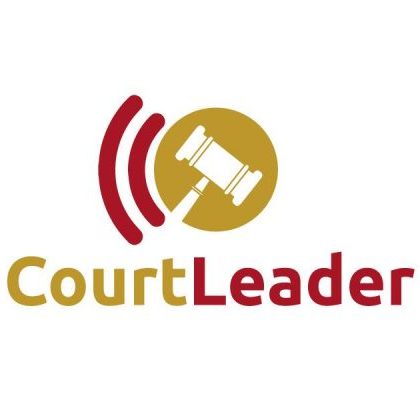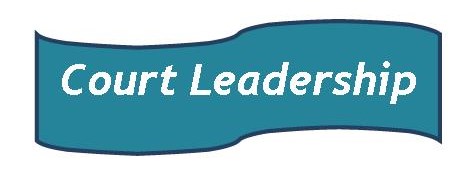It’s hard to deny that our interest is captivated on how we in courts adjust to the Coronavirus challenges: immediacy of operational changes, unfolding information, and an unknown and evolving nature of dealing with and creating a new work environment. Do these sound familiar with regards to what courts and court staff are facing? Courts, in fairly short order, have adapted.
“We live in a time of danger and opportunity… wanting more, wanting to thrive even under constantly shifting and often perilous conditions…people are called on to lead with the courage and skill to challenge the status quo, deploy themselves with agility, and mobilize others to step into the unknown.”[1]
Before the COVID19, courts may have been comfortable with the existing state of affairs and the normalcy of the way things have been done. We engaged in planning, whether for budget preparations or strategic planning initiatives, we interacted with justice partners, we applied rules and policies, and we addressed public perceptions by ensuring access to justice and accountability for our operations. Now during COVID19, our courts have found that it is important to focus on day-to-day operational challenges, to refocus discussions on urgent topics, and to suspend the rigor of rigid rules and deadlines. And, courts have needed to address the public need to be informed and involve and inform court personnel about changes.[2]
Before COVID19, courts were carrying out:
- Traditional methodical strategic planning
- Collegial collaboration and meetings
- Adherence to rules and rigor
- Management of public needs and perceptions
- Established methods (“the way we’ve done business”)
During and after COVID19, courts have been faced with:
- Attention to day-to-day operational practices
- Targeted and focused discussions on urgent topics
- Deferral or relaxation of rule deadlines and policy rigor
- Management of public and staff needs
- The new way of conducting business or the new normal
“Like it or not, we live in interesting times. They are times of danger and uncertainty, but they are also more open to the creative energy of men than any other time in history.” (Robert F. Kennedy, June 6, 1966)
These times call for adaptive leadership! What is adaptive leadership? Adaptive leadership has been described as the “practice and ability to mobilize people to tackle tough challenges and be able to thrive.”[3] Today, leaders need to have that ability to deal with change and thrive — and right now.
The dictionary indicates the definition of adaptive as making suitable for new conditions or modifying, altering or changing to adjust to a different environment.[4] Synonyms include: acclimatizing, accommodating, or adjusting.[5] To fully appreciate adaptive leadership, we need to examine the difference between TECHNICAL leadership (and problem solving) and ADAPTIVE leadership (and problem solving).
Technical leadership makes use of existing knowledge and techniques to solve a problem. This usually involves applying solutions according to the existing rules and protocols, and, providing a solution based upon what has occurred before. Sometimes, however, merely applying the know-how and tried and true practices will not resolve the problem.
That is where adaptive leadership comes into play. Adaptive leadership leverages the lack of experience on a particular challenge and creates a situation where new knowledge is formed and new solutions, or adaptations, are used to resolve the problem. The list below illustrates the differences between technical and adaptive problem solving and leadership.[6]
Technical Leadership:
- Familiarity with the nature of the challenge
- Clarity in problem understanding and definition
- Utilization of current know-how and skills
- Ability to work through and within rules and authorities
- Applying practices based upon past behavior and methods
- Application of solutions used before and “more of the same”
Adaptive Leadership:
- Difficulty identifying, defining and addressing the problem
- Lacking an immediate solution to the issue
- Learning and creation of new knowledge and skills
- Involving people close to the problem to solve the problem
- Applying new skills and techniques
- Using actions and practices not previously done
- Inventing new ways and creative solutions
When might court leaders consider the concepts of adaptive leadership? Adaptive leadership techniques may be used when: responding to a crisis; encountering (or seeking) massive change; addressing urgency for operational stability; being willing to consider the problem in new and different ways; and viewing the problem or challenge through lenses other than “how we’ve done it before.”
It should be noted that adaptive leadership and problem solving is not intended to remove the responsibility of future or long-range strategic planning, nor negate current practices that are working. Rather adaptive practices can build upon and append to methods improve and enhance operations.
There are three components of being adaptive:
- Preserve the organizational elements necessary for survival;
- Remove (or modify) the elements that are no longer necessary or useful; and
- Create (or innovate) new arrangements that enable the organization to thrive.[7]
These echo what the United States astronauts determined during the Apollo 13 space mission, when something went terribly wrong during flight and adaptations were necessary to allow the craft to return to earth. As described by former astronaut Col. Terry Virts, the astronauts needed to do the following to ensure they survived to fly home:
- Stay calm;
- Figure out what is going on; and
- Determine what IS working (to continue or expand use).[8]
“Think outside the box.” (Metaphor meaning to explore ideas that are creative and unusual)
Here are some practical examples of technical solutions to problems, followed by adaptive solutions or changes.
- Example Situation: Increase in football injuries and player concussions
- Technical Action/Solution: Produce more neck braces for players after injury
- Adaptive Action/Solution: Redesign player helmets to limit concussions
- Example Situation: Uptick in automobile accidents with passenger injuries
- Technical Action/Solution: Deploy additional beds in emergency rooms for patients
- Adaptive Action/Solution: Create airbags to lessen side and front collision injury
- Adaptive Action/Solution: Design driverless cars
And, straight from a recent newscast, here’s another example:[9]
- Example Situation: Limit infections arising from touching elevator surfaces and buttons
- Technical Action/Solution: Cover surfaces with plastic and have patrons wipe their hands
- Adaptive Action/Solution: Implement elevator foot controls for selecting elevator floors
All these adaptive solutions involved evaluating the challenge, reengineering some practice, discovering some way to be responsive to a problem, and creating a new method of dealing with the situation.
“Necessity is the mother of invention.” (English language proverb)
The benefits of adaptive leadership and problem solving include gaining:
- Skills to leverage the pressures of change;
- Ability to be more responsive;
- Comfort to lead in changing conditions; and
- Capacity to possess, create, or feel equipped with strategies to address the challenge.
In closing, here are some questions to contemplate:
- Are we applying technical solutions to a problem? Or adaptive solutions? Are we trying to resolve a challenge by merely applying old ways of doing things?
- Would adaptive solutions better serve us in solving the problem?
- How can we leverage the unknown to adapt and create new practices?
- How can we assist our court and staff to be comfortable with adaptive solutions?
“While courts continue to reengineer and redesign current and future operations, perhaps the most important leadership actions consist of leveraging the stark contrasts of how courts worked in the past versus how they work in the present and future … Courts must be part of the “new normal” by leveraging the contrasts, adapting solutions, and measuring how they work.”[10]
Additional sources suggested for more information and study include:
Ronald Heifetz, Alexander Grashow, and Marty Linsky, The Practice of Adaptive Leadership, Tools and Tactics for Changing Your Organization and the World, Harvard Business Press/Cambridge Leadership Associates, 2009
Ronald A. Heifetz and Marty Linsky, Leadership on the Line – Staying Alive through the Dangers of Leading, Harvard Business School Press, 2002.
[1] The Practice of Adaptive Leadership, Tools and Tactics for Changing Your Organization and the World) Heifetz, Grashow, Linsky, Harvard Business Press, inside book flap.
[2] See Janet G. Cornell, “COVID19 and the Courts: a Case Study of Contrasts, Reengineering and Observations,” Trends, National Center for State Courts, April 2020, available at https://www.ncsc.org/microsites/trends/home/Monthly-Trends-Articles/2020/COVID19-and-the-Courts.aspx
[3] From https://managementhelp.org/blogs/leadership/2010/07/07/adaptive-leadership/
[4] From https://www.dictionary.com/browse/adapt
[5] From https://www.merriam-webster.com/dictionary/adapt#synonyms
[6] Adaptive leadership and problem solving has been covered in several books, among them Ronald A. Heifetz and Marty Linsky, Leadership on the Line: Staying Alive through the Dangers of Leading , Cambridge, MA: Harvard Business School Press, 2002; and Ronald Heifetz, Alexander Grashow, and Marty Linsky, The Practice of Adaptive Leadership , Cambridge, MA: Harvard Business Press/Cambridge Leadership Associates, 2002.
[7] See https://managementhelp.org/blogs/leadership/2010/07/07/adaptive-leadership/
[8] Col. Terry Virts, former NASA astronaut, Space Shuttle pilot, and commander aboard the International Space Station, interview with Fox News Channel and commentator Neil Cavuto, broadcast on April 10, 2020.
[9] From ABC News on May 21, 2020, see https://abcnews.go.com/International/video/bangkok-mall-installs-foot-pedals-elevators-70819090
[10] See Janet G. Cornell, “COVID19 and the Courts: a Case Study of Contrasts, Reengineering and Observations,” Trends, National Center for State Courts, April 2020, available at https://www.ncsc.org/microsites/trends/home/Monthly-Trends-Articles/2020/COVID19-and-the-Courts.aspx


Thank you, Janet, for such a timely and inspiring article. I particularly like the foot control for the elevator. May courts rapidly find foot controls for our critical operational and third branch leadership functions! Our country and populace need us.
LikeLike
Hi thanks for sharing thiis
LikeLike